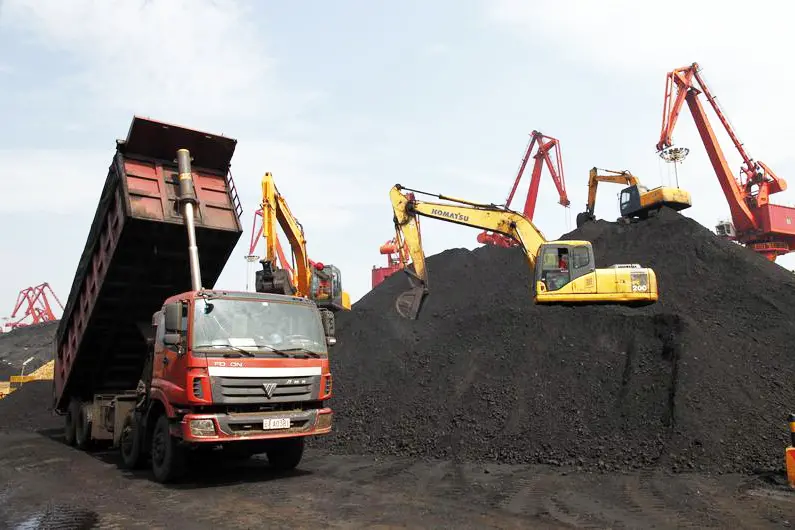PHOTO
(John Kemp is a Reuters market analyst. The views expressed are his own)
LONDON- China’s coal prices have climbed to a record high, signalling the need for more production in the short term, even as the government tries to reduce reliance on coal-fired power generation in the long term.
Prices for the most-traded thermal coal futures contract on the Zhengzhou Commodity Exchange hit $150 a tonne on Tuesday, up from $85 a year ago, which was also the five-year average before the COVID-19 pandemic.
Surging prices are an indication of the tension between the country’s surging electricity demand and the government’s stated aim to limit coal output and reduce it over time in favour of renewable energy sources.
Coal production in the first seven months of the year was up at a compound annual rate of only 4.1% compared with the same period in 2019, according to the National Bureau of Statistics.
But the country’s electricity generation increased at a compound annual rate of 7.4% over the same period in response to strong residential and industrial demand.
The fastest growth came from wind farms (+25% compound annual rate) and solar power (+24%), with slower growth from nuclear (+10%) and thermal generators (+7%) and a fall in hydroelectric output (-2%).
But both wind and solar are growing from a very low base so they have contributed only a small share of the extra generation required, with most of the extra generation coming from thermal sources, mainly coal.
In the first seven months of the year, China’s power producers generated 4,645 terawatt-hours (TWh), which was 615 more than in the same period in 201.
But only a minority of the extra generation came from wind (+119 TWh) and solar (+36 TWh) sources, with most coming from thermal plants (+445 TWh).
China is installing more wind and solar capacity than any other country but it is still not enough to keep pace with surging electricity demand, forcing greater reliance on coal in the short term.
As a result, the country is having to run new and existing thermal power plants for more hours. The average thermal generating unit ran for 2,589 hours in the first seven months of this year, up 268 hours (+12%) from the same period in 2020, according to data compiled by the China Electricity Council.
Reflecting the tightening coal supply situation, the National Development and Reform Commission (NDRC), the country’s top economic regulator, this summer called for more coal output to help to meet peak demand for air-conditioning.
“Key coal-producing regions such as Shanxi, Shaanxi and Mongolia should take the lead in ... increasing production and supply,” the commission said in a circular issued on July 23.
The NDRC directed all areas and coal mining companies to boost output from larger and more productive mines, accelerating capacity replacement and new construction.
It also ordered them to make the production of thermal coal their top priority and do everything possible to help power plants with low stocks to increase their number of days of coal storage.
Like other countries in Asia and Europe, China’s coal shortages and surging prices reflect the contradiction between the long-term need to move away from coal and the short-term need challenge of meeting power demand.
In the short term, higher coal prices are signalling the need to boost production to meet power producers’ needs and build sufficient stocks ahead of the winter heating season.
John Kemp
(Editing by David Goodman) ((john.kemp@thomsonreuters.com))












